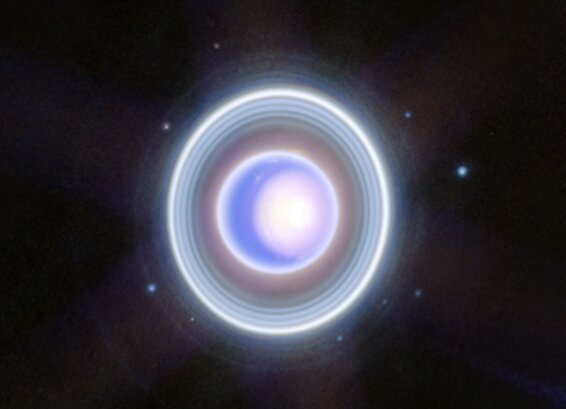The James Webb Space Telescope recently focused its attention on the peculiar and mysterious Uranus, an ice giant that rotates on its side. Webb captured a glimpse of this dynamic world, showcasing its rings, moons, storms, and other atmospheric features, including a seasonal polar cap. This image provides a more detailed view compared to the two-color version released earlier this year, thanks to additional wavelength coverage.
When observed in visible wavelengths by Voyager 2 in the 1980s, Uranus appeared as a serene, solid blue sphere. However, Webb’s infrared wavelengths reveal a bizarre and ever-changing ice planet, brimming with fascinating atmospheric characteristics.
Among these features, one of the most remarkable is the planet’s seasonal north polar cloud cap. In these newer images, certain details of the cap are more discernible compared to the Webb image from earlier this year. These include the bright, white inner cap and the dark lane at the bottom of the polar cap, towards the lower latitudes.
Several bright storms can also be observed near and below the southern border of the polar cap. The frequency, location, and number of these storms in Uranus’s atmosphere may be influenced by a combination of seasonal and meteorological factors.
The polar cap becomes more prominent as the planet’s pole begins to tilt towards the sun, approaching solstice and receiving increased sunlight. Uranus is set to reach its next solstice in 2028, and astronomers are eagerly anticipating any potential changes in the structure of these features. Webb’s observations will aid in unraveling the seasonal and meteorological effects that impact Uranus’s storms, providing crucial insights into the planet’s complex atmosphere.
2023-12-18 17:41:03
Article from phys.org rnrn
